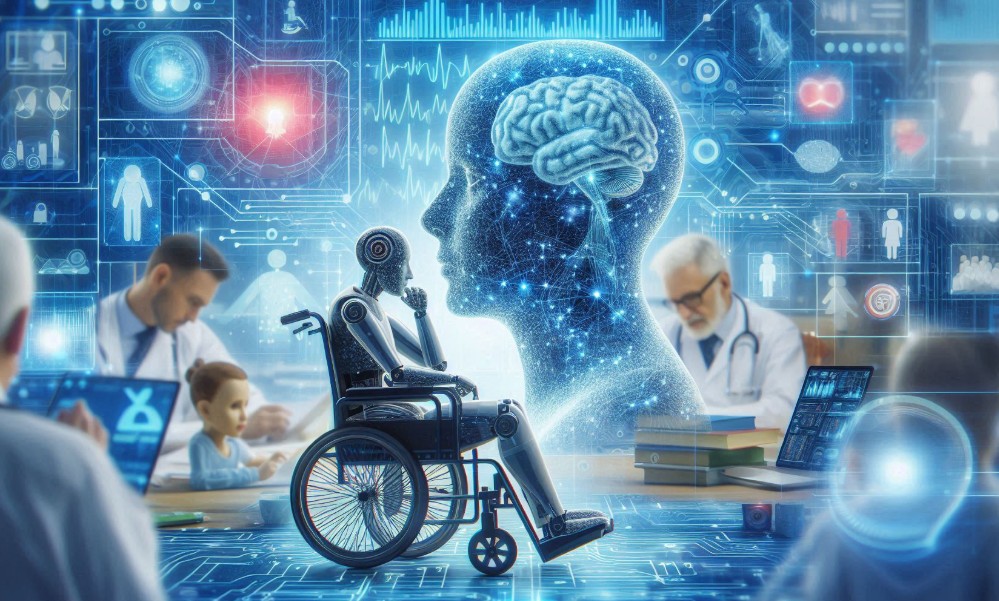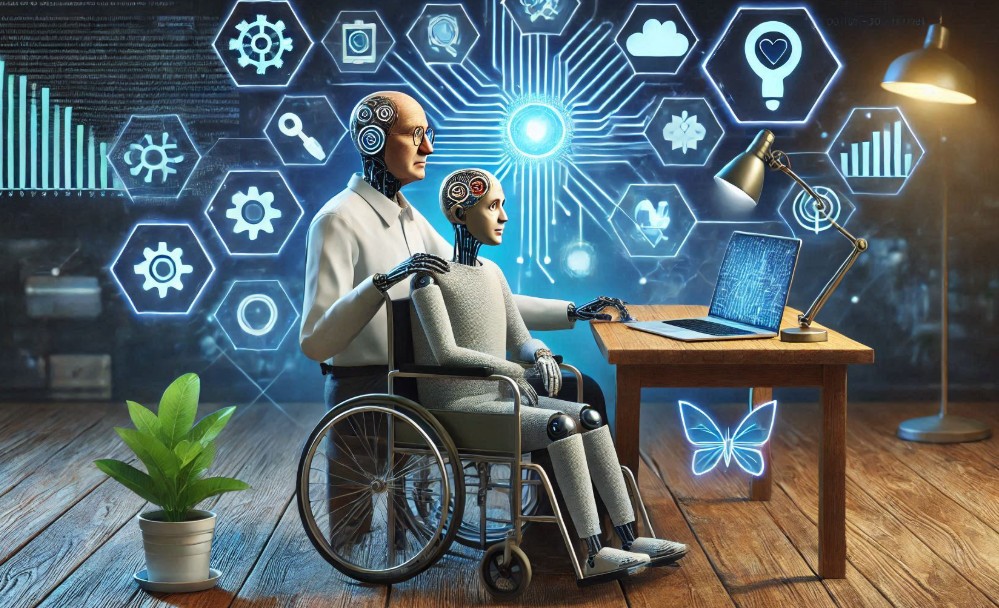In recent years, there has been a significant advancement in the field of Artificial Intelligence (AI) and Augmented Reality (AR). These technologies have become increasingly popular and have the potential to enhance virtual experiences in various fields such as gaming, education, healthcare, and...
Smart Security System Protects Elderly People Living Alone

As people age, maintaining independence becomes increasingly important, but so does ensuring their safety. The rise of advanced technology has opened new possibilities for assisting older individuals who prefer to remain in their own homes. These innovations provide effective ways to monitor their well-being, alerting loved ones and caregivers in case of emergencies, and offering peace of mind to both the individuals and their families.
Modern technology allows for continuous monitoring of health and security, providing a range of features to support those who wish to stay in their familiar environment. From detecting falls to instantly notifying emergency responders, these tools are designed to act quickly when needed. Moreover, many of these devices are unobtrusive, seamlessly integrating into daily life without creating unnecessary disruptions.
By leveraging advancements in monitoring and communication, it is now possible to ensure that people living by themselves have access to immediate assistance whenever necessary. The goal is not only to enhance safety but also to preserve the dignity and autonomy of those who wish to maintain their lifestyle while staying secure and connected with their loved ones.
How Technology Enhances Senior Safety
As individuals age, ensuring their safety becomes a primary concern, especially when they choose to remain in their homes. Advances in technology have made it possible to provide continuous monitoring and instant alerts in the event of emergencies. These innovations are designed to create a protective environment that offers peace of mind, ensuring that assistance is always within reach if needed. The focus is on providing both security and convenience, so seniors can live independently while still being cared for in case of any issues.
Monitoring and Detection Features
With the help of modern technology, there are numerous ways to monitor the well-being of people living on their own. Devices such as motion sensors, fall detectors, and real-time health tracking tools can immediately notify family members or emergency personnel if something is wrong. This type of monitoring ensures that issues like accidents or health-related incidents are addressed promptly, reducing the risk of serious consequences. In many cases, these technologies also provide daily health reports, giving caregivers a comprehensive view of their loved one's condition.
Communication and Emergency Response
In addition to monitoring, many modern devices offer enhanced communication features that allow seniors to easily contact loved ones or emergency services when necessary. Voice-activated assistants, emergency buttons, and wearable devices with direct call capabilities ensure that help is always just a click or a voice command away. These tools enable seniors to remain in control of their safety, reducing feelings of isolation and empowering them to take quick action if needed.

Benefits of Technology for Isolated Seniors
As individuals grow older, remaining independent while ensuring their safety becomes a delicate balance. Advances in technology offer numerous benefits to those who prefer to stay in their homes, providing them with tools to manage health, stay connected, and receive assistance in case of emergencies. These innovations not only promote autonomy but also enhance the overall quality of life by reducing the risks associated with isolation.
Improved Health Monitoring
One of the key advantages of modern technology is the ability to track and monitor health remotely. Wearable devices and sensors can track vital signs, detect falls, and alert healthcare professionals or family members when necessary. This continuous monitoring provides reassurance that help will be available in case of any sudden health issues, such as heart problems, falls, or changes in mobility. With these tools, seniors can be more confident in their ability to manage their health while receiving support when needed.
Enhanced Connectivity and Support
Technology also bridges the gap between isolated individuals and their loved ones or caregivers. Video calls, messaging apps, and voice assistants enable seniors to stay in touch with family and friends easily, reducing feelings of loneliness and promoting emotional well-being. In addition, these tools allow caregivers to remotely check in, monitor activity, and provide guidance or reassurance when necessary. This constant connectivity ensures that seniors have access to a support network, even if they are physically distant from family members.
Emergency Features in Modern Security Systems
When it comes to the well-being of individuals who choose to remain in their homes, having access to immediate assistance in times of need is crucial. Modern technology offers a variety of emergency response features designed to provide instant help in critical situations. These advanced tools are tailored to detect problems quickly and alert the right people, ensuring that help arrives without delay.
Instant Alerts and Notifications
Many of the latest technologies come equipped with automated alert systems that send notifications to family members, caregivers, or emergency services as soon as a problem is detected. Whether it’s a fall, sudden health issue, or an environmental hazard like smoke or carbon monoxide, these devices instantly notify the relevant parties, enabling quick action. Such rapid responses can prevent potentially life-threatening situations from escalating, giving both the individual and their loved ones peace of mind.
Wearable Devices with Emergency Buttons
Wearable gadgets have become one of the most reliable ways to ensure help is always within reach. Many of these devices feature emergency buttons that, when pressed, immediately connect the user with emergency responders or pre-set contacts. In addition to providing a quick means of communication, some devices are equipped with fall detection, automatically triggering alerts if the person is unable to respond. These features are designed to work even when the individual is not able to actively seek assistance themselves, offering an extra layer of protection in times of need.



